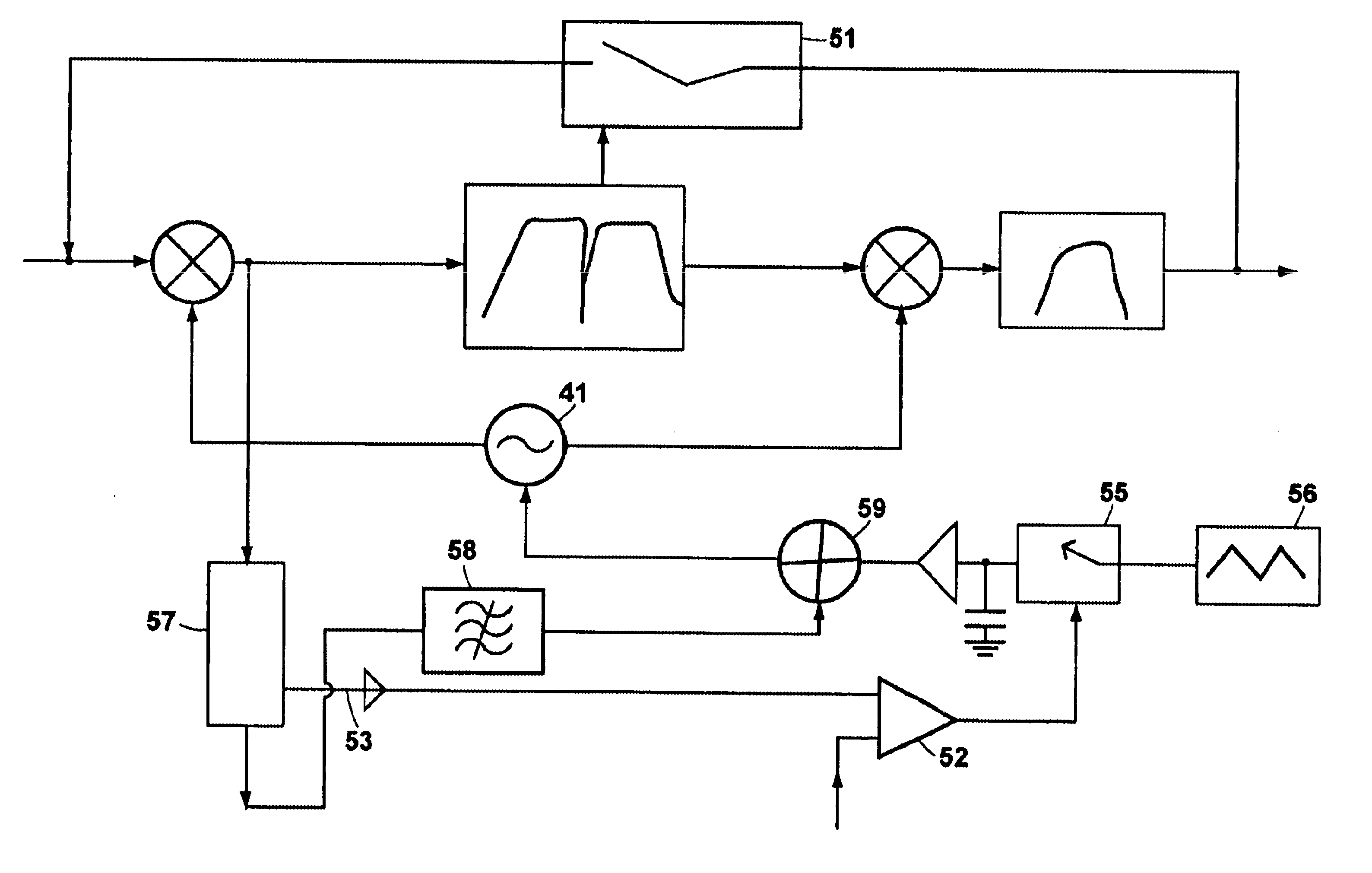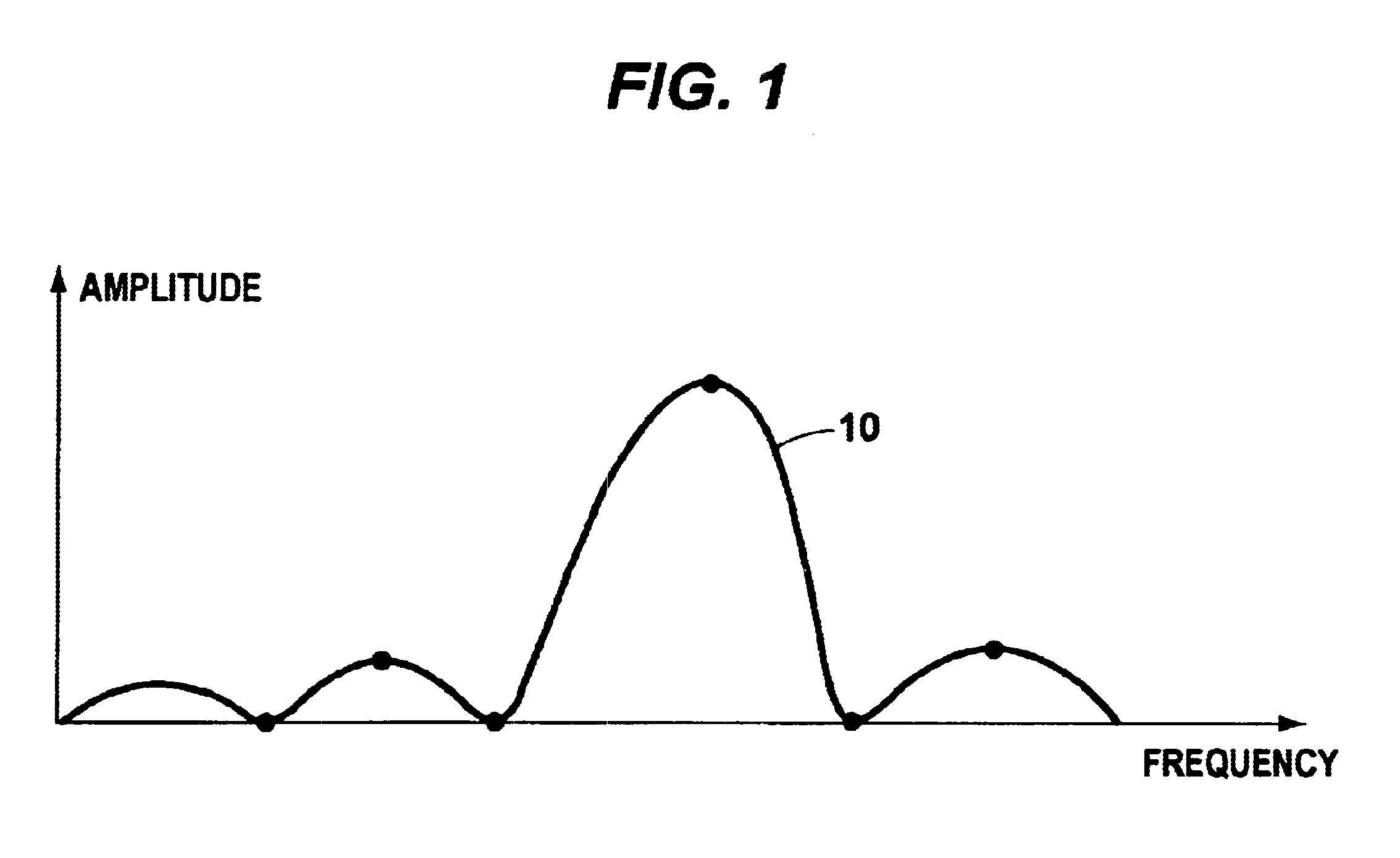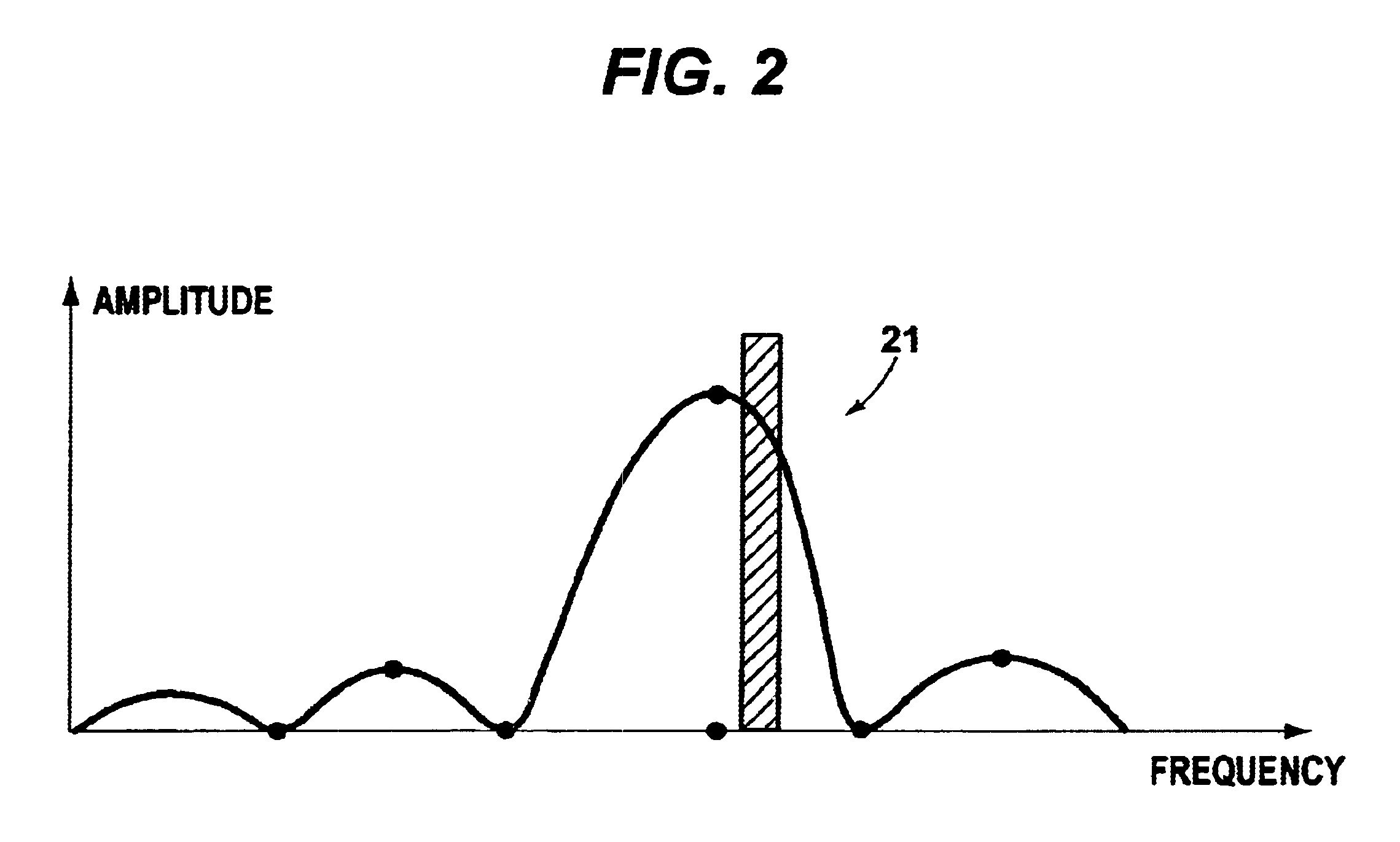Method and a device for maintaining the performance quality of a code-division multiple access system in the presence of narrow band interference
a multiple access system and performance quality technology, applied in the field of wireless communications, can solve the problems of not always practicable or economical, inability to clear all the required spectrum, increase the number of blocked calls, and drop the call ra
- Summary
- Abstract
- Description
- Claims
- Application Information
AI Technical Summary
Benefits of technology
Problems solved by technology
Method used
Image
Examples
Embodiment Construction
While the concept of employing a notch filter in CDMA communications is not new, the present invention employs an interference tracking system with multiple notch filters. The detection and tracking function of the invention is adapted to provide a number of features and attributes which are advantageous. First, the invention employs a single fast acting scanner and detector which detects and records all the narrowband channel received signal levels within the CDMA spectrum, and derives the average composite CDMA power. Using this power measurement, an adaptive threshold is derived for detecting the presence of narrowband interference. This threshold varies as the composite received CDMA power varies. Such an adaptive threshold has an advantage over a fixed one, since a fixed threshold may result in false detection of interference when the composite received CDMA power is relatively high.
Second, the largest N channels having levels which exceed the adaptive threshold are identified ...
PUM
 Login to View More
Login to View More Abstract
Description
Claims
Application Information
 Login to View More
Login to View More - R&D
- Intellectual Property
- Life Sciences
- Materials
- Tech Scout
- Unparalleled Data Quality
- Higher Quality Content
- 60% Fewer Hallucinations
Browse by: Latest US Patents, China's latest patents, Technical Efficacy Thesaurus, Application Domain, Technology Topic, Popular Technical Reports.
© 2025 PatSnap. All rights reserved.Legal|Privacy policy|Modern Slavery Act Transparency Statement|Sitemap|About US| Contact US: help@patsnap.com



